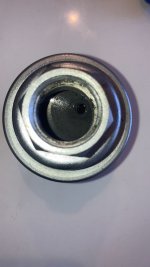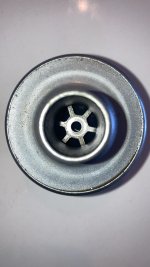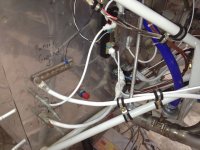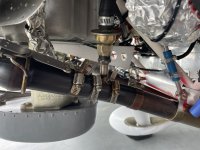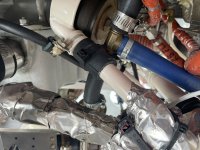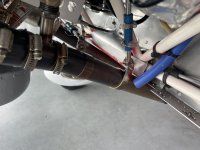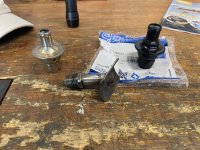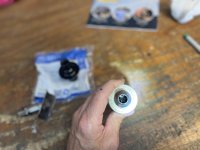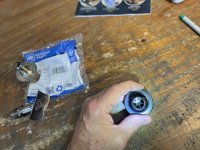I run an Anti-Splatt oil separator kit on my parallel valve IO-360-A1X, with the bottom connected with their exhaust kit through the check valve. I remove it every 50 hours, or at my annual condition inspection to verify that the port isn't clogged. It has never needed anything other than a minor scrubbing. But this time when I removed the valve to pull the exhaust port I was surprised to find it rattled in my hand. Upon inspection the rivet that holds the check valve assembly together, along with the spring, are missing. This is in a pusher application, which means the parts went through the propellor disk. I haven't yet fully inspected my prop to see if I can find any impact damage. My plane has ~150 hours on it, and this system was installed after my initial 40 hour Phase 1 testing was done, so it failed after roughly 100 hours in use.
These appear to be commercial, off the shelf air injection pump check valves, and looks to me like AV7T or GM 22040805 are like for like replacements. I contacted Anti-Splatt to see if this is a common failure, but I've not heard back.
Just a reminder that these systems do need periodic inspection and maintenance.
These appear to be commercial, off the shelf air injection pump check valves, and looks to me like AV7T or GM 22040805 are like for like replacements. I contacted Anti-Splatt to see if this is a common failure, but I've not heard back.
Just a reminder that these systems do need periodic inspection and maintenance.

